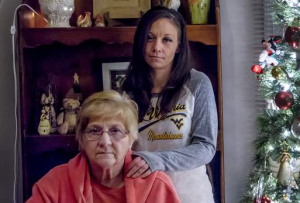With the death toll from their products climbing, drug manufacturers continued to ship them.
Mingo, Logan and Boone counties received the most doses of hydrocodone — sold under brand names such as Lortab, Vicodin and Norco — on a per-person basis in West Virginia. Wyoming and Raleigh counties scooped up OxyContin pills by the tens of millions.
The nation’s three largest prescription drug wholesalers — McKesson Corp., Cardinal Health and AmerisourceBergen Drug Co. — supplied more than half of all pain pills statewide.
For more than a decade, the same distributors disregarded rules to report suspicious orders for controlled substances in West Virginia to the state Board of Pharmacy, the Gazette-Mail found. And the board failed to enforce the same regulations that were on the books since 2001, while giving spotless inspection reviews to small-town pharmacies in the southern counties that ordered more pills than could possibly be taken by people who really needed medicine for pain.
As the fatalities mounted — hydrocodone and oxycodone overdose deaths increased 67 percent in West Virginia between 2007 and 2012 — the drug shippers’ CEOs collected salaries and bonuses in the tens of millions of dollars. Their companies made billions. McKesson has grown into the fifth-largest corporation in America. The drug distributor’s CEO was the nation’s highest-paid executive in 2012, according to Forbes.
In court cases, the companies have repeatedly denied they played any role in the nation’s pain-pill epidemic.
Their rebuttal goes like this: The wholesalers ship painkillers from drug manufacturers to licensed pharmacies. The pharmacies fill prescriptions from licensed doctors. The pills would never get in the hands of addicts and dealers if not for unscrupulous doctors who write illegal prescriptions.
In other words, don’t blame the middleman.
“The two roles that interface directly with the patient — the doctors who write the prescriptions and the pharmacists who fill them — are in a better position to identify and prevent the abuse and diversion of potentially addictive controlled substance,” McKesson General Counsel John Saia wrote in a recent letter released by the company last week.
But the doctors and pharmacists weren’t slowing the influx of pills.
Cardinal Health saw its hydrocodone shipments to Logan County increase six-fold over three years. AmerisourceBergen’s oxycodone sales to Greenbrier County soared from 292,000 pills to 1.2 million pills a year. And McKesson saturated Mingo County with more hydrocodone pills in one year — 3.3 million — than it supplied over five other consecutive years combined.
Year after year, the drug companies also shipped pain pills in increasing stronger formulations, DEA data shows. Addicts crave stronger pills over time to maintain the same high.
“It starts with the doctor writing, the pharmacist filling and the wholesaler distributing. They’re all three in bed together,” said Sam Suppa, a retired Charleston pharmacist who spent 60 years working at retail pharmacies in West Virginia. “The distributors knew what was going on. They just didn’t care.”
The fact that these companies “didn’t care” shouldn’t surprise anybody, considering that they’re one of the most profitable industries in the world. And with new breakthroughs in medical science and cures for diseases being found everyday, they’re the ones controlling what goes to market and what gets shipped. Not only are these drug companies making money off of the addiction of others, they’re roadblocking medicines that could genuinely help people. It’s disgusting.
On the Featured Image:
Source: wvgazettemail.com



TRY THYME TEA???? OR TUMERIC CURCUMIN?